Description
The KLOW peptide stack represents a sophisticated multi-component research formulation that combines four distinct bioactive peptides with complementary mechanisms of action for comprehensive investigation of tissue repair, regeneration, and anti-inflammatory processes. This carefully designed combination includes GHK-Cu (copper peptide complex), BPC-157 (stable gastric pentadecapeptide), Thymosin beta-4 (actin-binding polypeptide), and KPV (anti-inflammatory tripeptide), each contributing unique molecular mechanisms to create a synergistic research platform for advanced peptide studies.
GHK-Cu represents the copper complex of the naturally occurring tripeptide glycyl-L-histidyl-L-lysine, exhibiting the molecular formula C14H22CuN6O4 with a molecular weight of 403.92 g/mol. The peptide portion demonstrates high affinity for copper(II) ions, forming a stable chelation complex through coordination with the histidine imidazole nitrogen and the terminal amino group of lysine. This copper-peptide complex exhibits distinctive blue coloration characteristic of copper coordination compounds and demonstrates enhanced biological activity compared to the peptide alone. The copper coordination is essential for the compound’s biological functions, including stimulation of collagen synthesis, promotion of angiogenesis, and modulation of inflammatory responses.
BPC-157 (Body Protection Compound 157) represents a synthetic pentadecapeptide derived from a protective protein found in human gastric juice, with the molecular formula C62H98N16O22 and molecular weight of 1419.5 g/mol. The peptide consists of fifteen amino acids with the sequence Gly-Glu-Pro-Pro-Pro-Gly-Lys-Pro-Ala-Asp-Asp-Ala-Gly-Leu-Val, incorporating multiple proline residues that contribute to its structural stability and resistance to enzymatic degradation. BPC-157 demonstrates remarkable stability under various physiological conditions, maintaining biological activity across a wide range of pH values and temperatures, making it particularly valuable for research applications.
Thymosin beta-4 represents a naturally occurring 43-amino acid polypeptide with the molecular formula C212H350N56O78S and molecular weight of 4921 g/mol in humans. The peptide exhibits the sequence SDKPDMAEI EKFDKSKLKK TETQEKNPLP SKETIEQEKQ AGES with an acetylated serine residue at the N-terminus and an isoelectric point of 5.1. Thymosin beta-4 functions as a major actin-sequestering protein, binding to monomeric G-actin and preventing its polymerization into filamentous F-actin. This actin-binding activity is crucial for regulating cellular motility, wound healing, and tissue repair processes.
KPV represents a tripeptide fragment derived from the C-terminal region of alpha-melanocyte stimulating hormone (α-MSH), consisting of the amino acid sequence lysine-proline-valine with molecular formula C16H30N4O4 and molecular weight of 342.43 g/mol. Despite its small size, KPV demonstrates potent anti-inflammatory properties and exhibits high hydrophilicity, though this characteristic results in poor skin penetration when applied topically. The peptide’s anti-inflammatory activity is mediated through mechanisms distinct from traditional anti-inflammatory agents, involving modulation of inflammatory cytokine production and immune cell activation.
The synergistic combination of these four peptides in the KLOW formulation creates a comprehensive research platform for investigating multiple aspects of tissue repair and regeneration. GHK-Cu contributes copper-mediated enzymatic activities and collagen synthesis stimulation, while BPC-157 provides gastric-derived protective mechanisms and tissue healing properties. Thymosin beta-4 adds actin-regulatory functions essential for cellular motility and wound healing, and KPV contributes anti-inflammatory activity derived from melanocortin signaling pathways.
The molecular mechanisms underlying the KLOW combination involve multiple signaling pathways and cellular processes. GHK-Cu activates various growth factor pathways including transforming growth factor-beta (TGF-β) and vascular endothelial growth factor (VEGF), promoting collagen synthesis and angiogenesis. The copper component serves as a cofactor for lysyl oxidase and other enzymes involved in collagen cross-linking and extracellular matrix formation. BPC-157 demonstrates effects on multiple signaling pathways including nitric oxide synthase, growth hormone receptors, and various cytokine networks, contributing to its broad protective and healing properties.
Thymosin beta-4 regulates actin dynamics through its high-affinity binding to G-actin monomers, effectively sequestering actin and preventing spontaneous polymerization. This regulation is crucial for controlled actin filament assembly during cellular processes such as migration, wound healing, and tissue remodeling. The peptide also demonstrates effects on various growth factors and cytokines, including upregulation of laminin-5 and promotion of keratinocyte migration, contributing to wound healing processes.
KPV exerts anti-inflammatory effects through mechanisms involving melanocortin receptor signaling and modulation of inflammatory mediator production. The peptide demonstrates ability to reduce production of pro-inflammatory cytokines including tumor necrosis factor-alpha (TNF-α) and interleukin-1 beta (IL-1β), while promoting anti-inflammatory responses. Its derivation from α-MSH connects it to the melanocortin system, which plays important roles in inflammation resolution and tissue homeostasis.
Research applications of the KLOW combination include investigation of multi-modal tissue repair mechanisms, studies of peptide synergism and interaction effects, examination of copper-peptide delivery systems, and exploration of combined anti-inflammatory and regenerative approaches. The formulation enables researchers to study how different peptide mechanisms complement each other and potentially enhance overall biological effects compared to individual peptide treatments.
The combination allows for investigation of temporal aspects of tissue repair, as the different peptides may contribute to various phases of the healing process. GHK-Cu and BPC-157 may contribute to early inflammatory and proliferative phases, while Thymosin beta-4 supports cellular migration and remodeling phases, and KPV provides ongoing anti-inflammatory support throughout the process.
Quality control considerations for the KLOW formulation include verification of individual peptide purity and identity, assessment of copper content and coordination in the GHK-Cu component, evaluation of peptide stability under storage conditions, and confirmation of biological activity for each component. The multi-component nature of the formulation requires careful analytical methods to ensure proper composition and maintain the integrity of each peptide throughout storage and handling.
Research protocols utilizing the KLOW combination require consideration of the different pharmacokinetic properties of each component, optimal concentration ratios for synergistic effects, and appropriate experimental controls to distinguish individual versus combined peptide effects. The formulation’s complexity necessitates careful experimental design to properly evaluate the contributions of each component and their interactions.
Storage and handling requirements for the KLOW formulation include refrigerated storage to maintain peptide stability, protection from light to prevent copper complex degradation, appropriate reconstitution procedures to ensure proper dissolution of all components, and sterile handling techniques to prevent contamination. The presence of the copper complex requires additional considerations for storage container compatibility and prevention of metal ion interactions.
The research value of the KLOW combination lies in its ability to provide a comprehensive approach to studying tissue repair and regeneration mechanisms, offering researchers a single formulation that incorporates multiple complementary pathways. This approach enables investigation of how different repair mechanisms interact and potentially enhance each other’s effects, providing insights into optimal combination strategies for tissue engineering and regenerative medicine research.
Product Specifications
Product Name: KLOW Peptide Stack Components: GHK-Cu + BPC-157 + Thymosin beta-4 + KPV Classification: Multi-Component Peptide Research Formulation Research Applications: Tissue repair studies, anti-inflammatory research, peptide synergism investigation Storage: Refrigerated storage required (2-8°C) Reconstitution: Sterile water or bacteriostatic water Research Use Only: Not for human consumption
Component Molecular Information
GHK-Cu (Copper Peptide)
•Molecular Formula: C14H22CuN6O4
•Molecular Weight: 403.92 g/mol
•Structure: Gly-His-Lys chelated with Cu2+
•Function: Collagen synthesis, angiogenesis promotion
•Copper Coordination: Histidine and lysine binding
BPC-157 (Pentadecapeptide)
•Molecular Formula: C62H98N16O22
•Molecular Weight: 1419.5 g/mol
•Sequence: Gly-Glu-Pro-Pro-Pro-Gly-Lys-Pro-Ala-Asp-Asp-Ala-Gly-Leu-Val
•Function: Tissue protection and healing
•Stability: High resistance to enzymatic degradation
Thymosin Beta-4 (Polypeptide)
•Molecular Formula: C212H350N56O78S
•Molecular Weight: 4921 g/mol
•Function: Actin regulation, cellular motility
•N-terminal: Acetylated serine
KPV (Tripeptide)
•Molecular Formula: C16H30N4O4
•Molecular Weight: 342.43 g/mol
•Origin: α-MSH C-terminal fragment
•Function: Anti-inflammatory activity
Research Compliance Statement
This product is intended for research purposes only and is not approved for human consumption, therapeutic use, or any clinical applications. All research must be conducted in accordance with institutional guidelines for peptide research and appropriate laboratory safety protocols. Researchers must ensure compliance with all applicable regulations and ethical standards for multi-component peptide research in their jurisdiction. This product is not intended for use in food, drugs, medical devices, or cosmetics for humans or animals.
Only logged in customers who have purchased this product may leave a review.
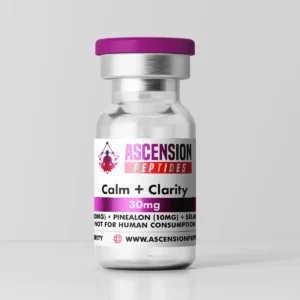
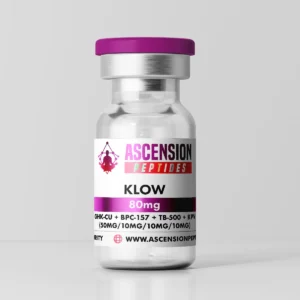
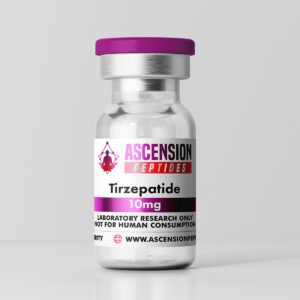
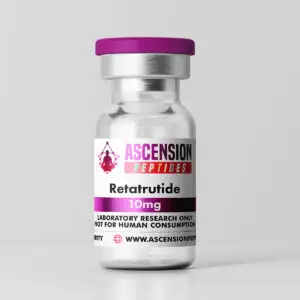
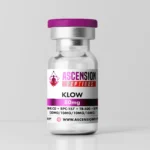
Reviews
There are no reviews yet.